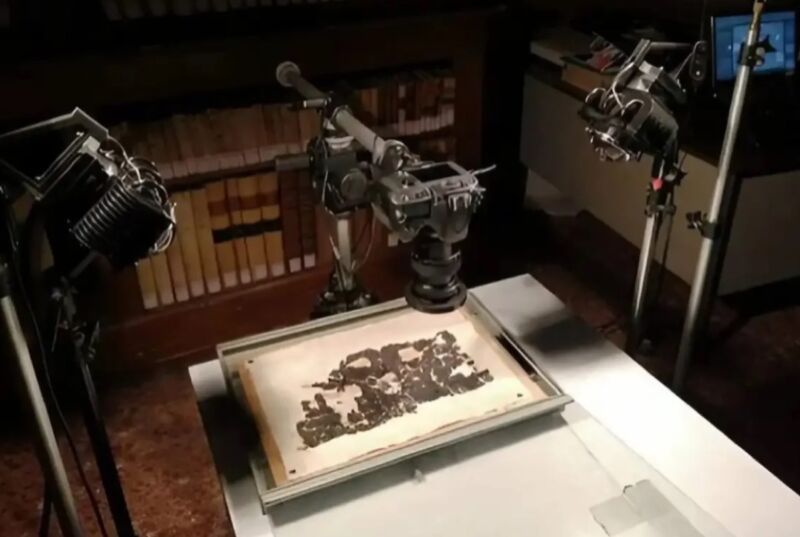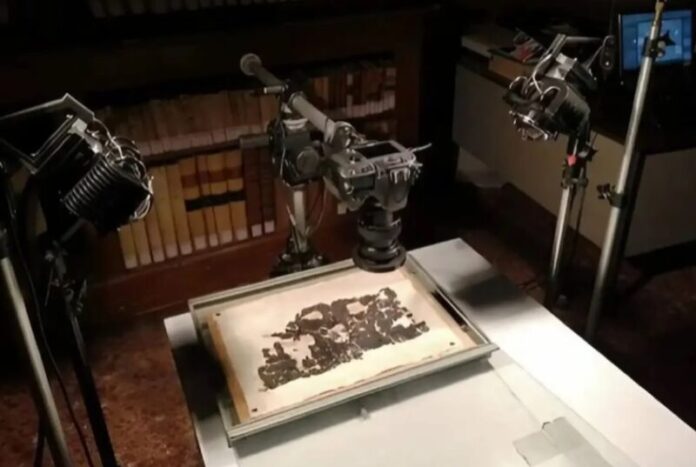
Enlarge / Imaging setup for a charred ancient papyrus recovered from the ruins of Herculaneum; 30 percent of the text has now been deciphered. (credit: CNR – Consiglio Nazionale delle Ricerche)
Historical accounts vary about how the Greek philosopher Plato died: in bed while listening to a young woman playing the flute; at a wedding feast; or peacefully in his sleep. But the few surviving texts from that period indicate that the philosopher was buried somewhere in the garden of the Academy he founded in Athens. The garden was quite large, but archaeologists have now deciphered a charred ancient papyrus scroll recovered from the ruins of Herculaneum, indicating a more precise burial location: in a private area near a sacred shrine to the Muses, according to Constanza Millani, director of the Institute of Heritage Science at Italy's National Research Council.
As previously reported, the ancient Roman resort town Pompeii wasn't the only city destroyed in the catastrophic 79 AD eruption of Mount Vesuvius. Several other cities in the area, including the wealthy enclave of Herculaneum, were fried by clouds of hot gas called pyroclastic pulses and flows. But still, some remnants of Roman wealth survived. One palatial residence in Herculaneum—believed to have once belonged to a man named Piso—contained hundreds of priceless written scrolls made from papyrus, singed into carbon by volcanic gas.
The scrolls stayed buried under volcanic mud until they were excavated in the 1700s from a single room that archaeologists believe held the personal working library of an Epicurean philosopher named Philodemus. There may be even more scrolls still buried on the as-yet-unexcavated lower floors of the villa. The few opened fragments helped scholars identify various Greek philosophical texts, including On Nature by Epicurus and several by Philodemus himself, as well as a handful of Latin works. But the more than 600 rolled-up scrolls were so fragile that it was long believed they would never be readable, since even touching them could cause them to crumble.
Read 9 remaining paragraphs | Comments
Ars Technica - All contentContinue reading/original-link]




